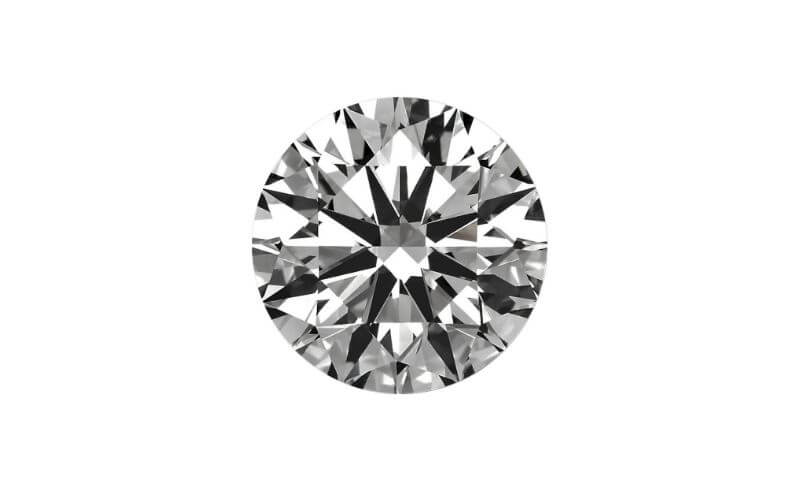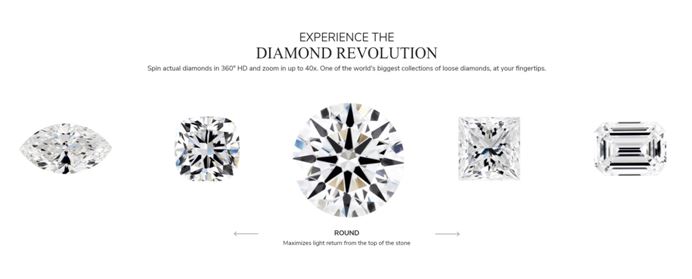INTRODUCTION TO ROUND CUT DIAMOND
From Meg Ryan to Felicity Jones and Brittany Snow, we have a consensus on what type of ring to wear for engagements – A round cut diamond!
But hold on!
Before we delve in fully, let us even understand what a diamond cut is.
A diamond cut, in the simplest of terms, is the style used in the cutting of a diamond. It has more to do with the interaction of the diamond with light. There are different types of cut, some of which have been from ancient times and have been almost phased out, but some remain until today.
They include the point cut, the table cut, the old single cut, the Peruzzi cut, the Mazarin cut, the old European cut and the round brilliant cut.
The round cut is the most popular and expensive of all the cuts today. It is uniquely designed with 58 facets, classically uniform and symmetrical shape, hence the name the ‘brilliant cut’. It stands out from the other cuts because of its ability to sparkle brightly when light passes through it.
The design in use for the round cut today is based on the work of Marcel Tolkowsky in 1919, who through his calculations, was able to integrate brilliance and sparkle into his design.
Before Tolkowsky, other designs were not as outstanding in sparkle and brilliance.
Even though his work has undergone a lot of modifications today, coupled with the automation of the diamond cut process, it still serves as the foundation of the round brilliant cut.
As we proceed in our discussion, we would be discussing:
- A round cut diamond, its parts and also, terminologies used in the gem world
- The ideal proportions of each part of the round cut diamond
- The 4Cs of Diamond which includes:
- Cut: the interaction of the diamond with light
- Color: observed due to deposition of some trace elements during the formation of the diamond
- Clarity: Refers to the extent to which a diamond is free from imperfections which could be either inclusions or blemishes
- Carat: The weight of the diamond
These 4Cs are affected by several factors and they shall be discussed in detail. We would also discuss the grading of these Cs and how they affect the price and demand of the diamond.
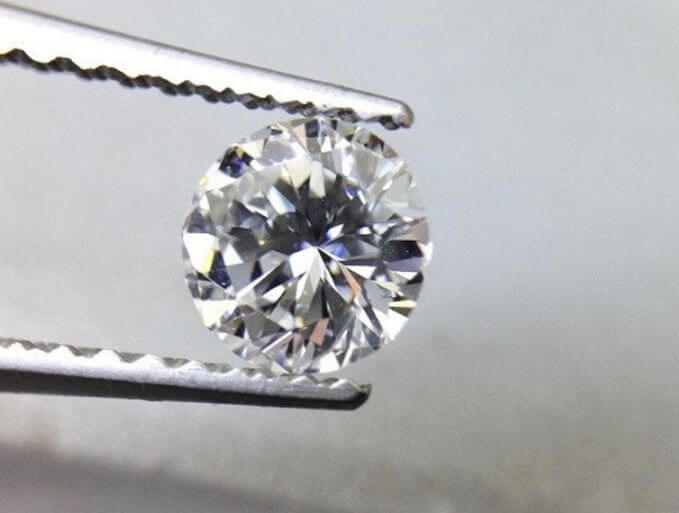
PARTS OF A ROUND DIAMOND
It is expedient that we understand the different parts of a diamond and some terms that are associated with them so that our discussion can be more productive.
- The Table: The table refers to the largest facet, situated at the top of the diamond. This is usually where light enters and leaves the diamond.
- The Culet: This is the lowest point of the diamond and is usually sealed to prevent leakage of light.
- The Depth of the diamond refers to the distance between the table and the culet of the diamond
- The crown refers to the part, just below the table, through which the maximum amount of light enters. Taking a look at it from the side, it looks like an inverted crown, hence the name.
- The girdle refers to the portion just below the crown, which is the widest part of the diamond. It could be polished, in facets or unpolished. Most modern diamonds have slightly thin, polished and faceted girdles.
- The Pavilion is just below the girdle and it is the part that refracts (bends) light entering the diamond so that the light comes back to enter your eye, giving the sparkle effect.
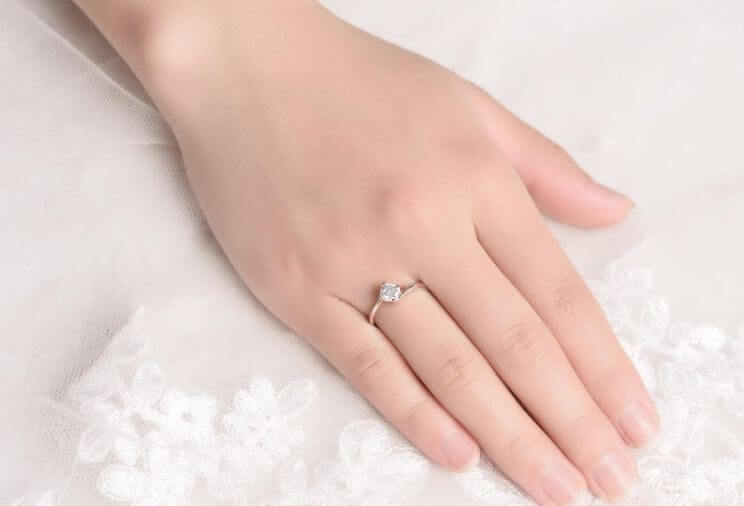
ASSOCIATED TERMS OF ROUND CUT
Now that we know all the parts, let us define some terms too:
- Brilliance: In the world of diamonds, very simply refers to the ability of a diamond to return light that shines on it. There are so many factors that affect this like the facets, the angulation, the symmetry and a host of others.
- Spread: Also, simply put, the size of a diamond. How large or small it looks to the eye. It is also influenced by several things. For instance, if the depth (remember the depth?) of a diamond is increased it would look smaller and vice versa, but then, a shallow diamond would leak more light and so might sparkle less.
- Fire: Ever noticed that looking from the top of the diamond (the table), you can see different colors. Magical right? Well, yes, but there is a scientific explanation for that. The different flashes of colors seen are as a result of the dispersion of light into different colors by the diamond. So, the fire of a diamond is how good this dispersion is.
- Facets: Flat planes that run along the entire outline of the diamond
- Symmetry: refers to the arrangement of the facets, how well they have been cut concerning each other.
- GIA: Gemological Institute of America. They came up with a grading system for different factors that affect diamonds. We would encounter some of their scales shortly.
It is important to note that all of these factors interplay to determine how appealing the Diamond is and invariably, also affect the price of the diamonds
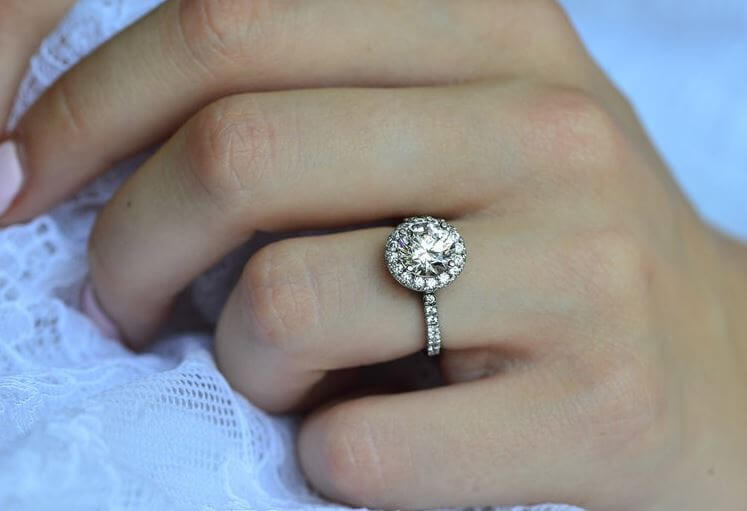
THE IDEAL ROUND CUT DIAMOND
Putting it together, the ideal round cut proportions for the different parts as put forward by the GIA is shown in the diagram and also the table below:
| DIAMOND PART/ CHARACTERISTIC | |||||||
| CUT GRADE | TABLE (%) | DEPTH (%) | CROWN ANGLE(%) | PAVILLION DEPTH (%) | GIRDLE | CULET | LENGTH TO WIDTH RATIO |
| EXCELLENT | 53 – 59 | 59 -62 | 34 -34.9 | 42 -43
| Thin to Slightly Thick | None |
1.0 – 1.01 |
|
VERY GOOD | 51 – 53 or 58 – 60 | 58 -58.9 or 61.9 – 63 | 32.1 -33.9 or 35 – 35.9
| 41 – 41.9 or 43.1 – 43.9 | Very thin to Slightly thick |
Very Small | |
|
GOOD | 51/52 or 61 – 64 | 57.0 -57.9 or 63.1 – 64.0 | 30.1 -31.9 or 36 –38 | 40 -40.9 or 44 – 44.9
| Thin to Thick |
Small |
1.01 – 1.02 |
|
FAIR | 50 or 65 – 69 | 56.0 – 56.9 or 64.1 – 65 | 29 -30 or 38.1 – 40 | 39 -39.9 or 45 – 45.9 | Very thin to Thick |
Medium | |
|
POOR | <50 or >69 | <56 or >65 | < 29 or >40 | < 39 or >46 | Extremely Thin to Extremely Thick |
> Medium |
>1.02 |
Now that we understand our terms and our parts, we can proceed to talk about the 4C’s of Diamonds!
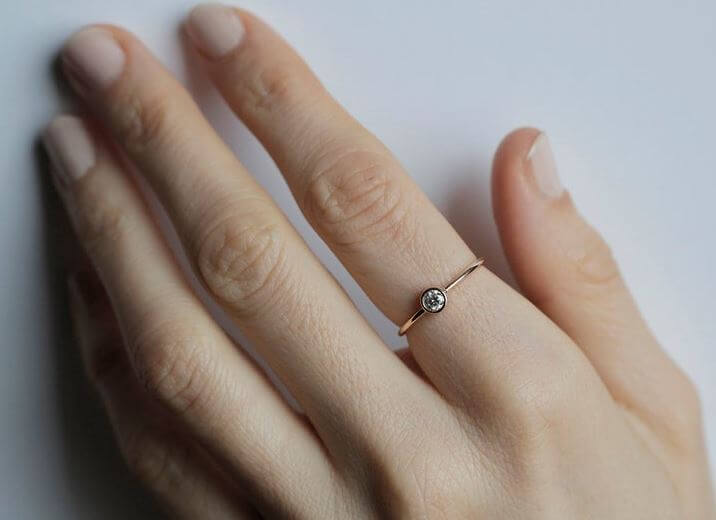
THE 4CS OF DIAMOND
- CUT
The first of them is the cut!
The cut as we saw earlier refers to the style used in the cutting of the diamond. It is important to understand that this does not refer to the shape primarily; rather, it has more to do with the interaction of the diamond with light. The type of cut of a diamond would determine how much the diamond would reflect light. As a prospective buyer, this should be the first ‘C’ that you consider. The reason is that a poor cut means that there is lesser light being reflected the eye and as such, less sparkle.
According to the GIA, 7 factors affect the cut grade of a diamond which includes:
- Polish
- Symmetry
- Weight Ratio
- Durability
- Brightness
- Fire
- Scintillation
Based on these, the GIA has 5 grades of cut
- Excellent: This premium cut grade constitutes the top 3% of jewelry quality diamonds in the world today and is characterized by perfection. The table is where it is supposed to be, the culet is well entered, nothing is out of proportion and the diamond sparkles without any iota of darkness in it.
- Very good: This cut grade refers to the top 15% of diamonds. It achieves almost all of the potentials of the perfect diamond, with a brilliant sparkle, minimal light leakage, and good scintillation.
- Good: Top 25% of the lot. It has good sparkle, but with some light leakage.
- Fair: Fairly standard ratios in weight and balance, but there is significant light leakage which affects it sparkle. This grade would not make for visually appealing jewelry.
- Poor: Lowest grade, with poor standard measurements and ratios. There are also very dark areas because of significant light leakage, which affect its scintillation. This grade would also not make for sparkling jewelry.
- COLOR
You might wonder what is responsible for the colors of diamonds, after all, are they not supposed to be colorless? Well, not exactly. Many diamonds are colored, ranging from just a tinge to a significant coloring that might affect the sparkle.
The color observed is due to the deposition of some trace elements, during the formation of the diamonds over millions of years. According to the chart above, the GIA has standardized the color scale so that potential buyers can have an idea of what to look for.
It has also been observed that most people prefer colorless diamonds. The color scale is from D TO Z.
- D – F, COLOURLESS: According to the GIA, diamonds in this category have no color at all, and if they do, the color can only be visualized by trained gemologists who would typically have to use other diamonds to get the exact color. Diamonds in this category constitute about 1% of jewelry quality diamonds today. The D colorless grade symbolizes perfection, with no colors whatsoever and the E colorless grade would have no detectable coloring, even at 10x magnification. The F colorless grade is the most affordable of all, with no traces of detectable coloring with the naked eye.
- G-J, NEAR COLOURLESS: As the name implies, this grade is near perfect in terms of coloring. It has yellow traces which can be visualized by a trained eye. This class constitutes the top 15% of jewelry quality diamonds. The G near colorless is the most popular of all the classes because it is more affordable than the D to F class but still balances the color with value. The Sparkle is not affected by the color. The H near colorless is also very exquisite, showing no distracting or interfering colors. It is also quite popular among diamond owners. The I and J near colorless class show shades of yellow which might have some distracting coloring that affect the sparkle, although still undetectable by untrained eyes.
- K-M, FAINT: They represent the top 40% of jewelry quality diamonds available. These diamonds are also brilliant, but also reflect some color on examination. The K faint yellow is a white diamond that still retains its sparkle in spite of its coloring. The traces of yellow are so faint that it is difficult to see on the examination. The L faint yellow looks good in yellow gold settings. Its color is detectable by untrained eyes. The M faint yellow also has obvious coloring when examined, but is also known to sparkle well. For this FAINT class, be sure to consult your gemologist before buying.
- N – R, VERY LIGHT: This class has an easily visible yellow or brown tint and there is lesser demand for them. They are also more affordable than in higher classes.
- S-Z, LIGHT: This color grade is also not very common as most customers would deem it too colorful to pass for a white diamond.
Overall, the color of a diamond becomes more important as the diamond gets larger because it is then more prominent. Also, the type of setting the diamond is placed in would also hide or make the color more obvious. For instance, mounting a faint yellow on a yellow background would hide the color of the diamond, but placing the same on a white background would make it more obvious. You can always seek counsel from a gemmologist on diamond color if you cannot distinguish it yourself.
- CLARITY
This is another all-important C in the world of quality diamonds. Some people pay so much attention to the cut and the color but fail to appreciate how much they can save and still get value, by considering the clarity. The clarity of a gem refers to the extent to which it is free of imperfections. These imperfections can be inclusions (within the diamond) or blemishes (on the surface) and can be thought of as ‘birthmarks’ that are etched in or on the diamond during its making. There are several types of inclusions, some of which include:
- Pinpoint: As the name implies, tiny black dots present in the diamond. They are the most common type of inclusions and are usually noticeable on the table of a diamond.
- Feather: This type of inclusion is the second most common. It is an observable little crack that can run from the top to the bottom of the diamond. It can affect the structure of the diamond and should be avoided.
- Cloud: A cloud inclusion has many pinpoints clustered together.
- Crystal: A crystal is usually a deposit of diamond or other mineral deposits within the diamond
- Needle: A long thin continuous line, which is usually crystalline, whitish or clear.
- Cavity: This inclusion seems like a hole in the diamond. It should be avoided at all cost.
- Natural: A natural inclusion is typically part of the original diamond that was left in the cutting process. Some diamond cutters can leave some of it deliberately.
Now to the GIA scale of clarity:
- FLAWLESS: In this clarity range, no inclusions are noticeable to the observer even at 10x magnification. Diamonds in this category are very rare (less than 0.02% of jewelry quality) and very expensive.
- INTERNALLY FLAWLESS: This has no inclusions, just blemishes which are not visible to the naked eye. They are only seen by a trained eye under 10x magnifications. This grade constitutes the top 3% of jewelry quality diamonds.
It is worthy of note that both the FL and IF look similar to the naked eye. It is only under 10X magnification that a trained eye can identify the difference.
- VERY VERY SLIGHTLY INCLUDED: This grade has inclusions which are not visible except under 10x magnification and even then, are very difficult to see by a trained eye. The VVS1 usually has inclusions along that can be seen from the pavilion while the VVS2 has inclusions that can be seen from the crown.
- VERY SLIGHTLY INCLUDED: Inclusions here are seen under 10x magnification, but are not major. These inclusions are also very difficult to see with the naked eye.
- SLIGHTLY INCLUDED: This grade has major inclusions that are obvious under 10x magnification. The inclusions seen in SI1 are most times invisible to the naked eye, but SI2 has inclusions that can be usually seen on close inspection.
- INCLUDED: In this category, inclusions are so obvious under 10x magnification that they may affect the brilliance of the diamond. Diamonds in this class all have inclusions that are almost always visible to the naked eye. I2 and I3 might even be less durable due to these inclusions.
- CARAT: Now to the C which many people tend to focus a lot on. The carat (ct) is the global standard for measuring the weight of diamonds.
1 Carat = 0.20 grams
You might be wondering why diamonds are so small yet expensive.
Well, it has everything to do with their mining. To get 1 ct, that is, 0.20 grams of the diamond, studies have shown that you need to do about 250 tons of rock mining!
Now, look at that!
There are expected sizes for each weight. For instance, a 1 ct diamond is expected to have a diameter of approximately 6.5mm and a 2 ct, 8.5mm.
That said, it is important to note that two diamonds might weigh the same but one may look larger than the other. This can be due to other properties like the cut and others discussed earlier. A good example is seen when two diamonds of equal carat weight, with the first having more depth than the second, are placed side by side. The diamond with more depth would look smaller, even though they are of the same weight. It is therefore important to know the expected dimensions of a diamond to get its true size.
Again, concerning the weight, it is important to state that the carat measurement of a diamond does not entirely determine its value, even though it is very important. The other 3Cs that we have examined would play a crucial role in the cost of the diamond.
The implication of this is that you can save more, depending on your budget by adjusting several values of the Cs to fit what you are looking for.
Pricing of diamonds does not increase linearly as the ct increases, rather the increase is exponential – it is good to keep that in mind.
There is also a group of weights known as critical weights, they include: 0.30ct, 0.40ct, 0.50ct, 0.70ct, 0.90ct 1.00ct, 1.50ct, 2.00ct, 3.00ct, 4.00ct, 5.00ct and 10.00ct.
At each of these weights, the price of the diamond shoots up. A tip in buying is that you can get cheaper diamonds for almost the same size and quality by buying just below the critical weight.
For instance, 0.25ct, or 0.95ct and so on.
Remember that what matters is how it looks when it is mounted and as such, the carat would not be the first thing people see. The cut, however, would always be important and depending on it, the diamond can look bigger or smaller.
In conclusion, with all we have discussed you can go diamond-shopping with accurate knowledge and precision about what you are going for!
